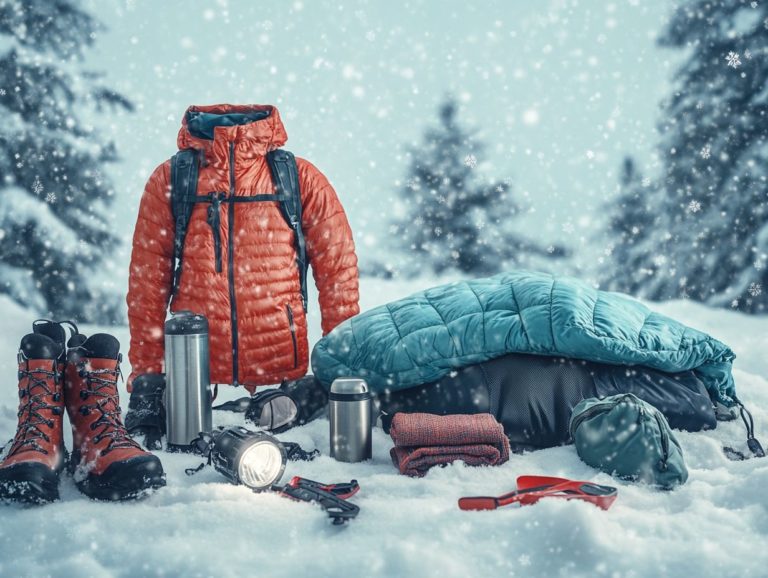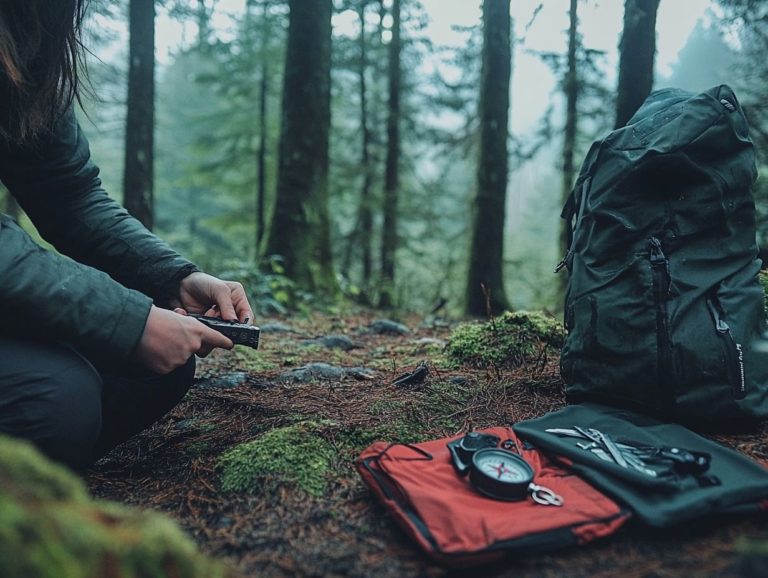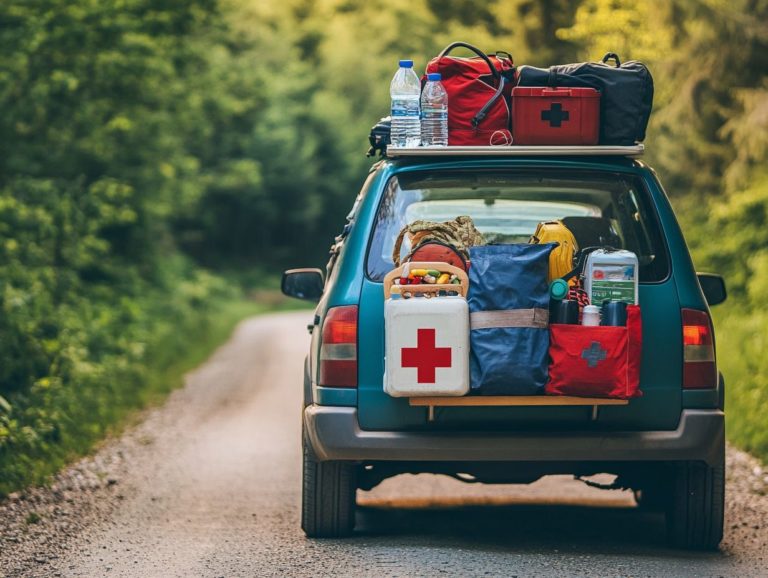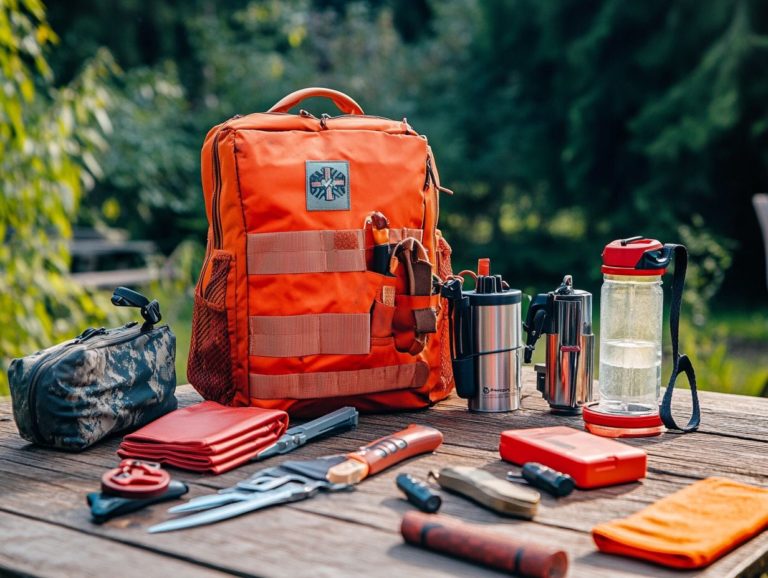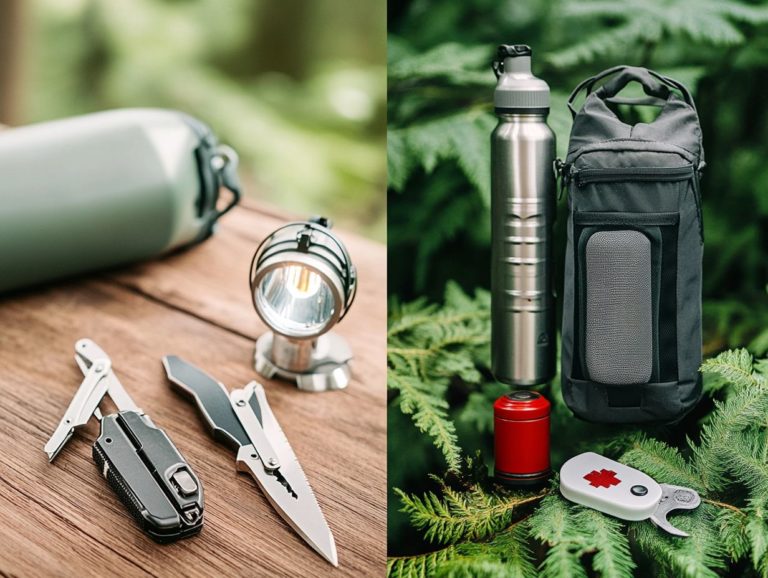The Essential Guide to Survival Gear Maintenance
Maintaining your survival gear is crucial. It ensures everything works perfectly when you need it most, especially in the wilderness.
Regular maintenance is vital for safety and preparedness. This guide covers must-have items for your survival kit, care tips for clothing and tools, and more.
You’ll discover how to create a maintenance schedule and manage emergency repairs, including using a repair kit.
Stay prepared for any situation, from food safety to accessing clean water.
Contents
- Key Takeaways:
- The Importance of Survival Gear Maintenance
- Essential Gear for Survival
- Maintenance for Different Types of Gear
- Creating a Maintenance Schedule
- Tips for Staying Organized and Consistent
- Emergency Repairs and Replacements
- What to Do When Gear Fails in the Field
- Long-Term Storage and Preservation
- Preparing Gear for Extended Storage
- Frequently Asked Questions
Key Takeaways:
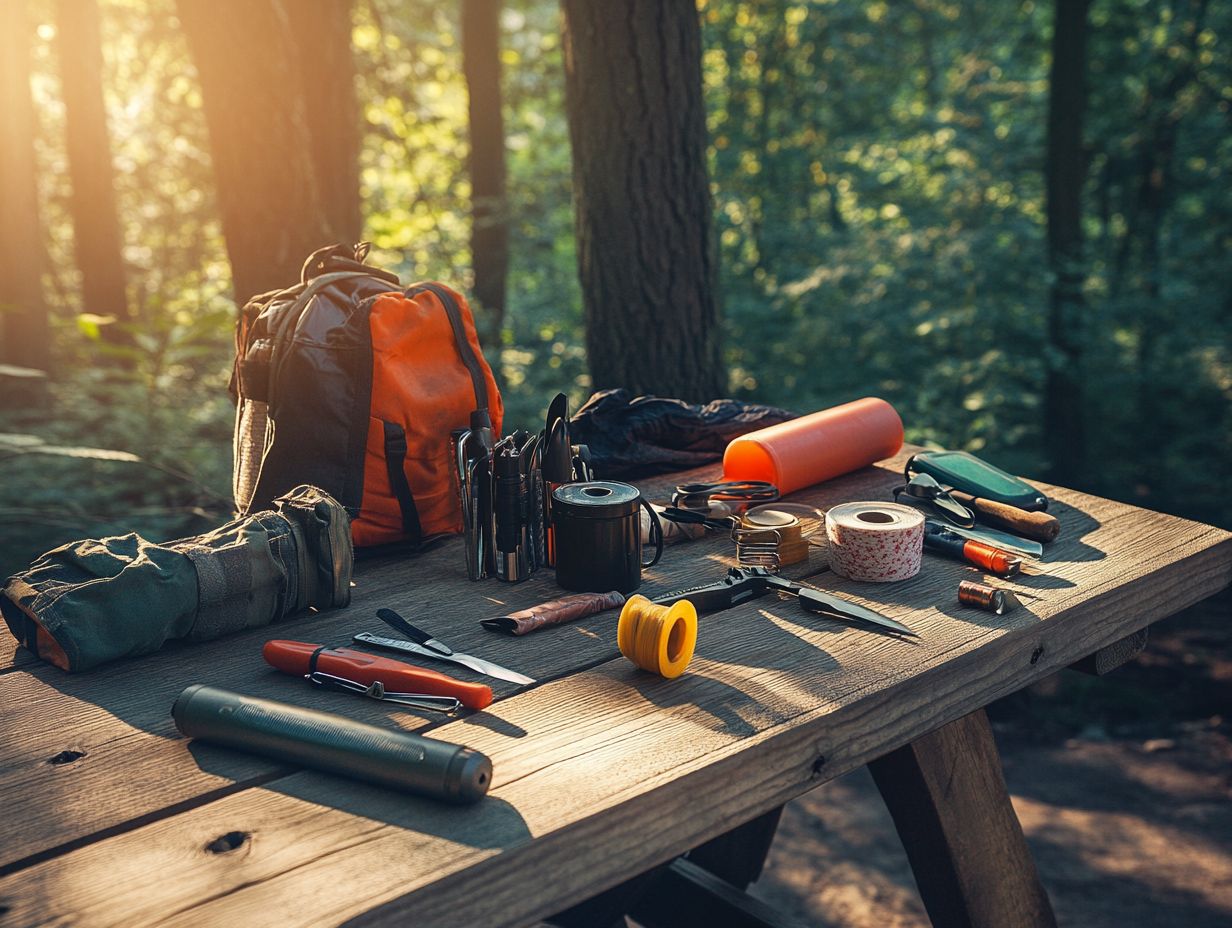
- Regular maintenance keeps survival gear in top condition.
- Must-have items include clothing, footwear, tools, and equipment.
- Organizing and sticking to a maintenance schedule is key.
The Importance of Survival Gear Maintenance
Maintaining your survival gear is essential for safety and effectiveness in the wild. Regularly checking items like portable shelters and first aid kits can make a life-saving difference.
Neglecting maintenance puts your chances of survival at risk. Critical equipment like fire starters and water purification systems can fail when you need them most.
Why Regular Maintenance is Crucial
Regularly checking your survival gear keeps it clean and functional. Inspecting lightweight cookware and navigation tools enhances your performance outdoors.
For example, frequent checks on compasses and GPS devices ensure accurate readings. This helps you avoid getting lost in unfamiliar areas.
Consistent cleaning and proper storage of cookware maintain durability. This is vital for efficient meal preparation, especially when using bushcraft techniques.
Don’t forget to inspect your emergency bivvy bags. Regular repairs keep them waterproof and ready for unpredictable weather.
Essential Gear for Survival
When preparing for outdoor survival, having the right gear is vital. It provides tools for navigation, shelter, food safety, and clean water access.
Durable backpacks, lightweight tents, and versatile clothing should be the backbone of your survival kit. Including personal locator beacons and fishing traps boosts your chances of thriving in the wilderness.
Must-Have Items for Any Survival Kit
A well-prepared survival kit should include essential items like a first aid kit, fire starters, and water purification tools, along with navigation tools, to ensure your safety and survival.
In any outdoor adventure, having the right gear can mean the difference between a manageable situation and a dire one. A complete first aid kit is essential; it not only includes bandages and antiseptics for minor injuries but also supplies to handle more serious injuries, including signaling devices for emergencies.
Fire starters are crucial for warmth, cooking, and signaling for help, while also maintaining morale during challenging times. Water purification tools, such as filters or purification tablets, ensure you have access to safe drinking water, which is vital for hydration and health, especially when relying on natural water sources.
These items create a strong foundation for outdoor safety, significantly enhancing your preparedness for any unforeseen circumstances you may encounter, whether in the woods or on the water.
Maintenance for Different Types of Gear
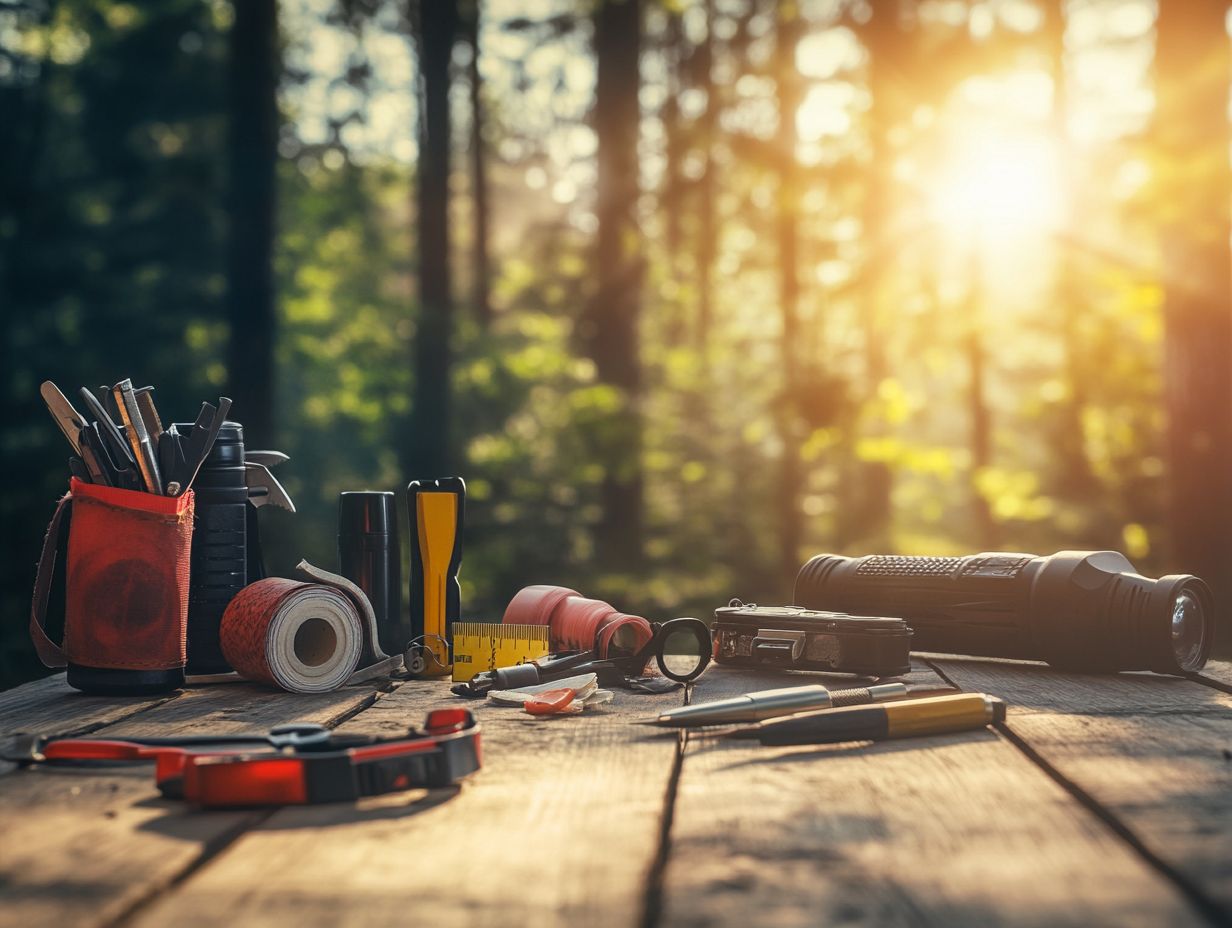
Different types of gear require specialized maintenance practices to ensure their effectiveness and longevity in survival situations. For example, your clothing and footwear need careful cleaning and treatment to enhance durability, while your tools like navigation devices and lightweight cookware call for regular inspections to assess wear and functionality.
This focused approach to maintenance can greatly improve the performance of your gear, making it an essential part of your preparation.
How to Maintain Clothing and Footwear
Maintaining your clothing and footwear is crucial for ensuring their durability and protective qualities during outdoor adventures, particularly when facing unpredictable weather.
By following a few straightforward steps like regular washing, proper drying, and reapplying waterproofing treatments you can significantly extend the life of your gear. It s vital to read care labels and select appropriate cleaning agents to prevent damage to both fabric and insulation.
Regularly inspecting for wear and tear allows you to make timely repairs, easily managed with adhesive patches or sewing kits designed specifically for outdoor equipment, ensuring your gear remains ready for use.
Well-maintained clothing and footwear enhance your comfort and functionality and play a critical role in your safety during unexpected conditions, making them essential companions in your outdoor survival toolkit.
Keeping Tools and Equipment in Top Shape
Regular maintenance of your tools and equipment is essential to ensure they re functional and ready when you find yourself in a survival situation requiring immediate action.
This involves engaging in important practices, starting with thorough cleaning to prevent rust and corrosion on metal surfaces, which could compromise their performance. Don t forget to sharpen those blades regularly; a well-maintained knife or axe will significantly enhance your efficiency and safety during outdoor tasks, especially when using bushcraft cooking techniques, which involve cooking with minimal resources in natural settings.
Proper storage in a dry, cool environment can also extend the lifespan of your gear, including items like your durable backpack. Using cases or pouches will protect your items from dust and moisture, keeping them in optimal condition when you need them the most.
By adhering to these maintenance routines, you’ll be equipped to tackle any unforeseen challenges the wilderness throws your way, enhancing your survival capabilities.
Creating a Maintenance Schedule
Establishing a maintenance schedule for your gear is a smart strategy to ensure its consistent upkeep, ultimately extending both its lifespan and functionality. By taking a well-organized approach, you ll have a clear record of when to check your first aid kit, replace fire starters, or inspect portable shelters, ensuring you’re prepared for any emergency.
Stay organized, and you’ll be ready for any wilderness adventure!
Prepare your survival kit today and venture into the wild with confidence!
Tips for Staying Organized and Consistent
To maintain organization and consistency in gear maintenance, use a gear checklist or a digital tool to track essential tasks. This includes reviewing your emergency bivvy and personal locator beacon. This method ensures that nothing slips through the cracks and helps you monitor when each item was last serviced.
For example, a spreadsheet is invaluable for categorizing your gear by type and maintenance frequency. This allows you to prioritize tasks easily, especially when managing survival tools. Various apps designed for gear maintenance offer handy features like reminders and notifications, prompting you to perform necessary upkeep promptly.
By being consistent in these efforts, you extend the lifespan of your equipment and elevate its performance. This ensures it operates at its peak when you need it most in challenging wilderness conditions.
Emergency Repairs and Replacements
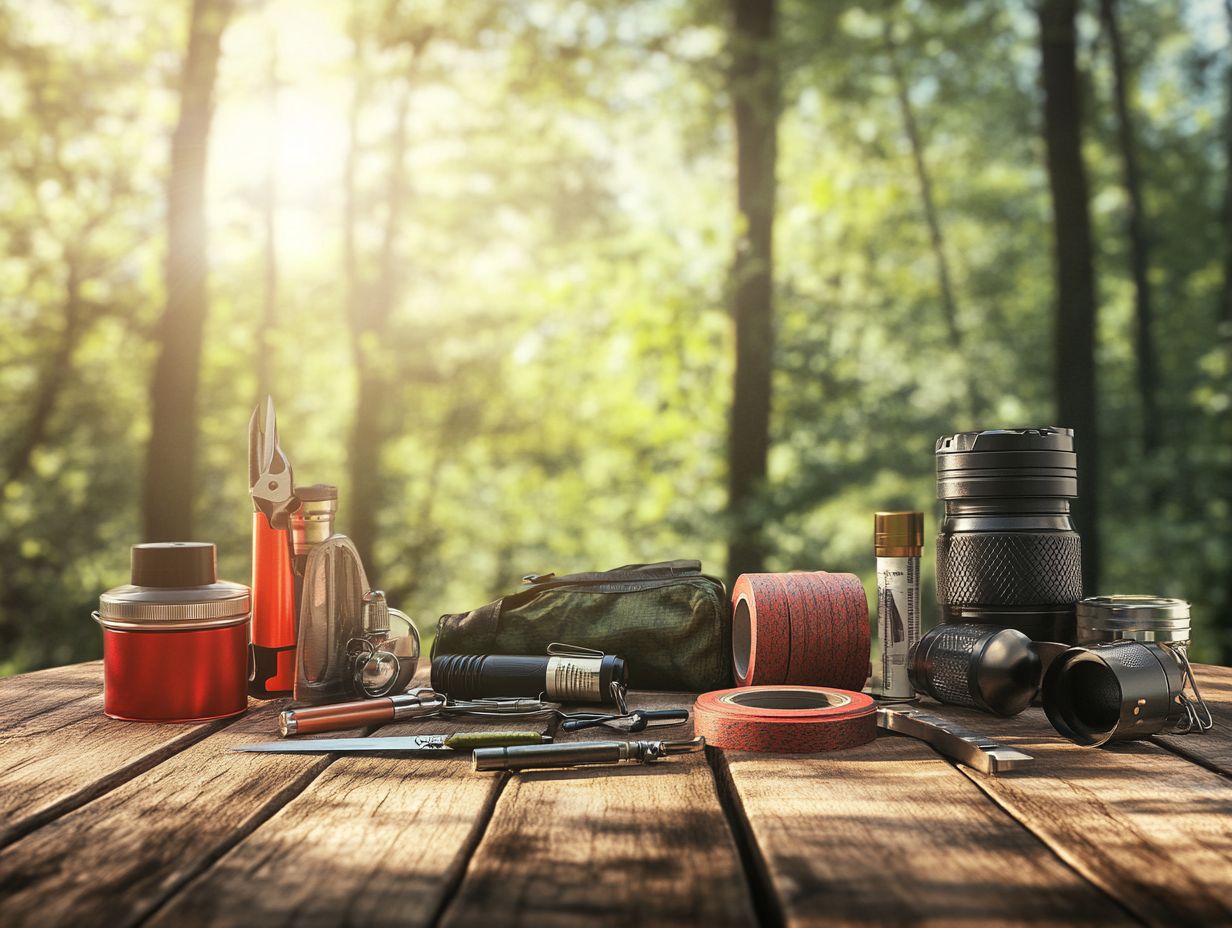
In survival situations, be prepared for gear failures. Knowing how to execute emergency repairs can truly be a lifesaver, especially for your lightweight tent or portable shelter.
Whether facing a ripped tent, a malfunctioning tool, or issues with cooking equipment, having the skills for quick fixes reduces the impact on your outdoor experience.
Using the resources at your disposal, such as your emergency bivvy and signaling devices, greatly enhances your survival capabilities.
What to Do When Gear Fails in the Field
When your gear fails, quick thinking and a bit of improvisation can lighten the blow to your survival strategy. This allows you to adapt using available resources.
Understanding gear failure nuances is crucial. For instance, if a tent pole snaps, gather sturdy sticks to rig a temporary solution, or set up a pack raft for emergency water navigation. If your cooking equipment malfunctions, craft a makeshift fire pit with rocks to save the day, especially when using bushcraft cooking methods. To ensure your gear is reliable, it’s essential to recognize the importance of testing your survival gear.
Keep a basic repair kit stocked with duct tape, paracord, and multi-tools. Adhesive patches allow you to make quick fixes and restore functionality to your essential items.
These practical tactics boost your chances of weathering unexpected challenges and highlight the power of resourcefulness in survival situations.
Long-Term Storage and Preservation
Proper long-term storage and preservation of your survival gear is vital for functionality. Consider the effects of humidity, temperature, and pests, as these factors influence the integrity of your items, from lightweight cookware to durable backpacks.
Implement effective protective measures to maintain quality over time, ensuring your gear stands the test of both time and nature.
Preparing Gear for Extended Storage
Preparing your gear for extended storage requires meticulous cleaning and maintenance. This prevents deterioration and ensures it s ready for action when needed.
Inspect each piece closely for signs of wear, rust, or damage. These factors can jeopardize performance in critical moments.
After inspection, clean all gear thoroughly using suitable cleaning agents that won t cause corrosion or degradation. Apply protective coatings or lubricants to prevent moisture buildup. Maintaining proper ventilation and temperature control in your storage area further shields against environmental threats.
Organizing your items for easy access can make all the difference in a crisis situation.
This video covers essential tips for gear maintenance and emergency preparedness.
Frequently Asked Questions
What is ‘The Essential Guide to Survival Gear Maintenance’?
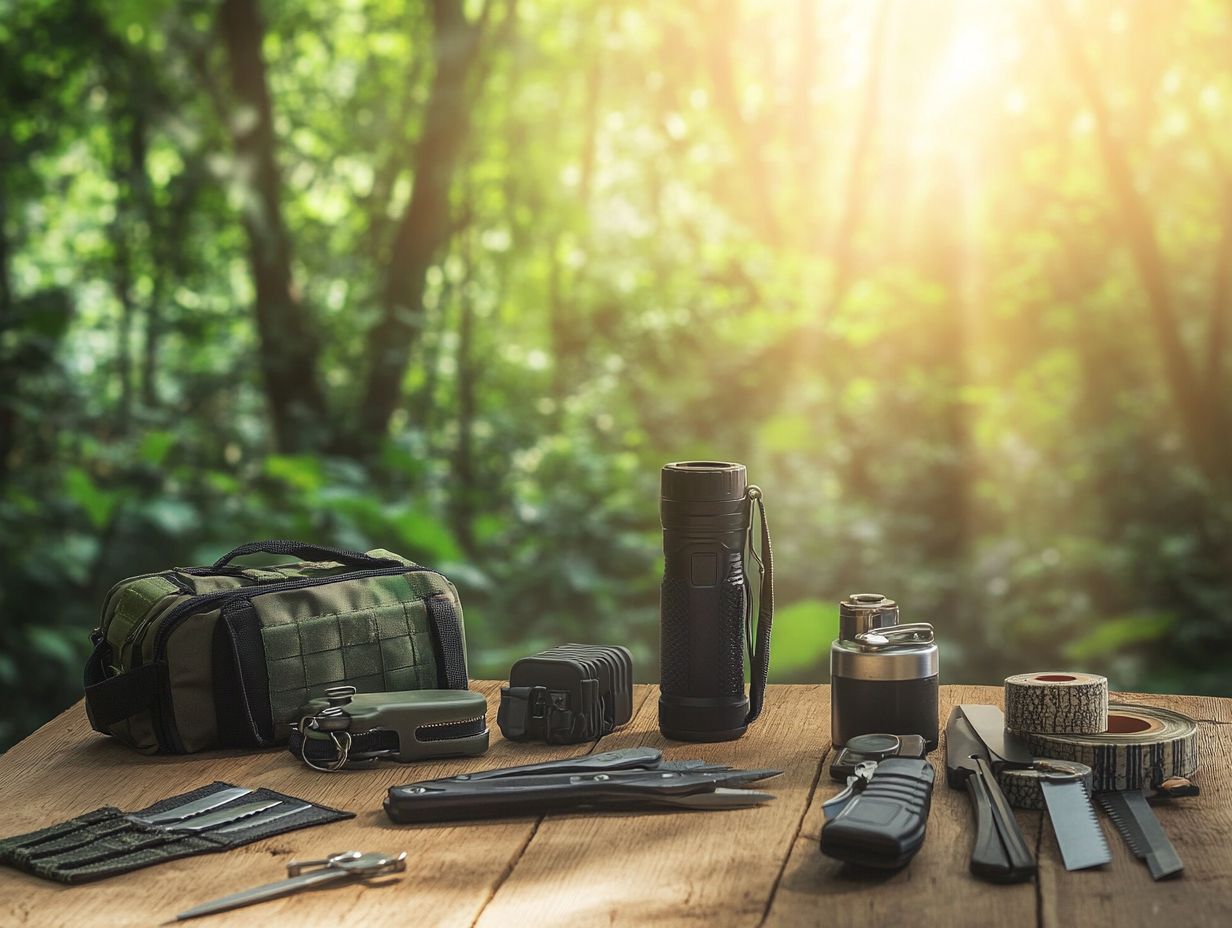
This guide teaches you how to maintain your survival gear effectively. It covers essential items like durable backpacks and lightweight tents.
You’ll also learn about materials like Cordura nylon, a strong fabric that enhances the durability of your gear.
Why is survival gear maintenance important?
Maintaining your survival gear is crucial for ensuring it s always ready for emergencies. Proper care extends your gear’s lifespan and saves you money over time.
What types of gear does this guide cover?
This guide covers a variety of survival gear. You’ll find information on knives, fire starters, shelter materials, water purification systems, first aid kits, and communication devices like personal locator beacons and pack rafts.
Do I need any special tools to maintain my survival gear?
Most maintenance tasks can be done with basic tools you likely already have at home. Some gear may require specific tools, but these are usually minimal.
How often should I perform maintenance on my gear?
Check your gear every 3-6 months for basic maintenance. Perform thorough maintenance at least once a year to ensure everything is in top condition.
Is this guide suitable for beginners?
Yes! This guide is user-friendly and perfect for all skill levels. It includes step-by-step instructions, helpful tips, and illustrations for easy understanding.

